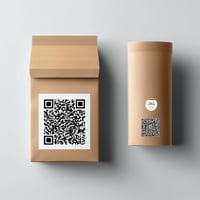As the world becomes increasingly conscious of its environmental impact, businesses are looking for ways to make their operations more sustainable. It’s therefore no surprise that packaging is central to this initiative. Through the adoption of eco-friendly materials, along with reducing waste and improving supply chains, companies can improve their environmental footprint by enhancing their brand reputation to meet consumer expectations.
Here are some practical tips for integrating sustainable packaging into your supply chain:
1. Choose Eco-Friendly Materials

- Recycled materials
Opt for cardboard, paper, or plastic that has already been recycled. This helps to reduce the demand for virgin materials and minimise landfill waste. When choosing recycled materials, look for certifications like FSC® (Forest Stewardship Council) to ensure they come from responsibly managed sources. - Biodegradable and compostable materials
Consider plant-based options like cornstarch, mushroom packaging, or seaweed. These materials break down naturally, reducing their environmental impact at the end of their lifecycle. They can also offer unique and innovative packaging solutions that can help your brand stand out. - Sustainably sourced materials
If virgin materials are necessary for your packaging, ensure they come from responsibly managed sources. As outlined, choosing materials that carry certifications from bodies like the FSC® for paper products and certifications like Rainforest Alliance for agricultural products is key.
2. Design for Minimalism and Reusability

- Right-sizing
Avoid overpackaging by ensuring your packaging fits the product snugly. This reduces excess material and improves space during transportation, leading to lower costs and a reduced carbon footprint. - Modular design
Consider packaging that can be reused for different purposes. This can help to extend the lifecycle of your packaging and reduce the need for disposable materials. For example, you could design packaging that can be easily converted into storage containers or other useful items. - Consumer reuse
Design packaging that customers can repurpose or recycle. This can encourage customers to participate in the circular economy and reduce the amount of waste that ends up in landfills. For example, you could design packaging that can be easily turned into a craft project or used as a gift box.
3. Embrace Closed-Loop Systems

- Returnable packaging
Implement systems where packaging can be returned, cleaned, and reused. This can be especially effective for B2B supply chains, where the same packaging can be used multiple times. - Take-back programs
Encourage customers to return packaging for recycling or reuse. This can help to reduce the amount of packaging waste that ends up in landfills and demonstrate your commitment to sustainability. - Material recovery partnerships
Collaborate with recycling facilities to ensure proper disposal and reintegration of packaging materials. This can help to ensure that your packaging is recycled or repurposed, rather than ending up in landfills.
4. Leverage Smart Packaging Technologies

- RFID and QR codes
Track packaging throughout its lifecycle to reduce waste and improve efficiency. This can help to identify lost or damaged packages, as well as improve inventory management. - Smart labels
Use labels that indicate product freshness or shelf-life to minimise food waste. This can help to reduce the amount of food that is wasted due to spoilage or expiration. - Digital printing
Consider digital printing methods to reduce waste associated with traditional printing processes. Digital printing allows for more flexible and customised packaging, which can help to reduce overproduction and waste.
5. Optimise Transportation and Logistics

- Lightweight packaging
Reduce the weight of packaging to lower transportation costs and emissions. This can help to reduce the environmental impact of your supply chain. - Stackable and nestable packaging
Design packaging that maximises space in trucks and warehouses. This can help to reduce the number of shipments required and improve transportation efficiency. - Regional sourcing
Source packaging materials locally to reduce transportation emissions. This can help to reduce the carbon footprint of your packaging.
6. Communicate Sustainability Initiatives

- Labelling
Indicate the recyclability, compostability, or sustainability of your packaging. This can help to educate consumers and encourage them to recycle or reuse your packaging. - Educate consumers
Provide information on how customers can dispose of or reuse the packaging. This can help to increase consumer awareness and participation in recycling programs. - Public reporting
Share your sustainability goals and achievements. This can help to build trust with consumers and demonstrate your commitment to sustainability.
7. Engage in Continuous Improvement

- Life Cycle Assessment (LCA)
Conduct LCAs to measure the environmental impact of your packaging. This can help you to identify areas where you can improve the sustainability of your packaging. - Supplier collaboration
Work with suppliers who share your sustainability goals. This can help to ensure that your packaging is sustainably produced. - Stay informed on regulations
Keep up-to-date with environmental regulations. This can help you to ensure that your packaging complies with all relevant laws and regulations.
Following these guidelines can help businesses make a significant contribution to a more sustainable future, ensuring continued growth and scalability without the environmental cost.
To learn more about how we can support your packaging needs and increase your supply chain sustainability, call us on 01543 396700, email us at sales@allpack.uk.com, or send us a message today.